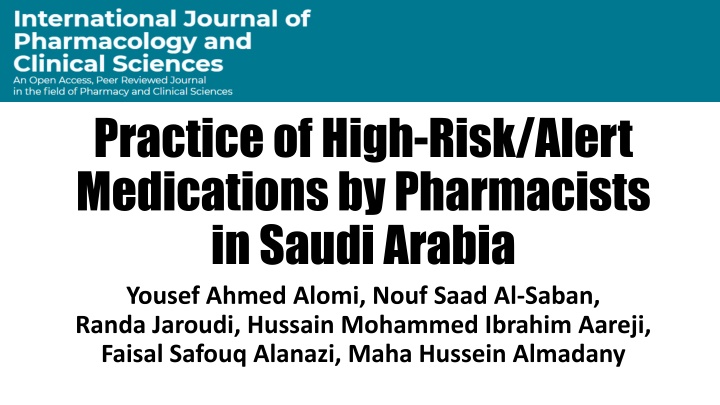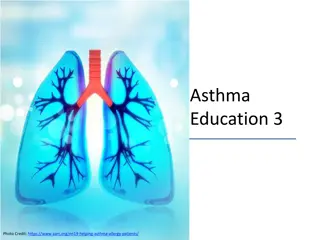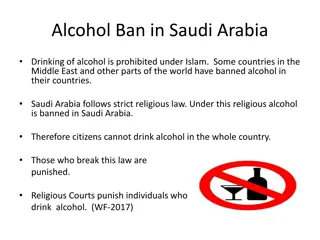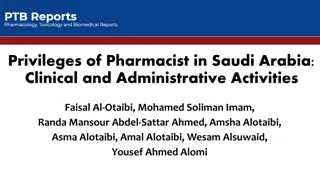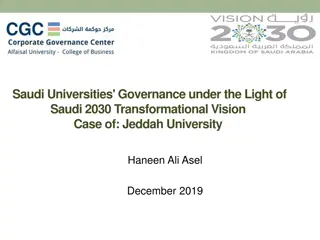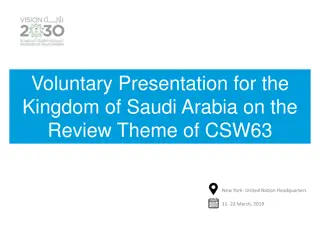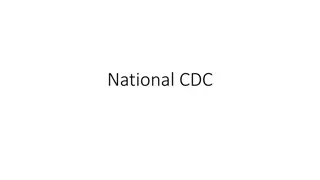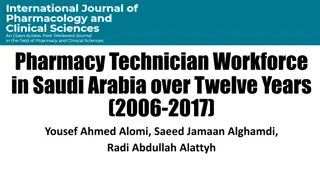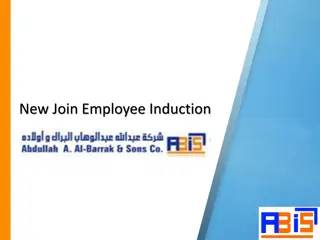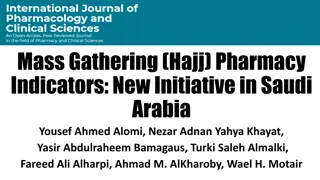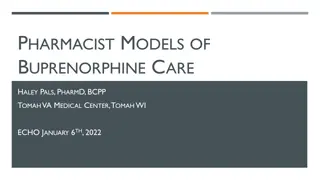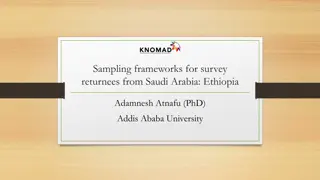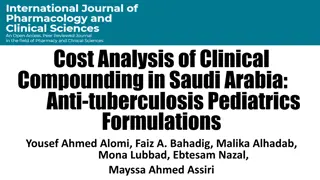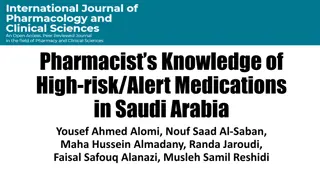Pharmacist Practice of High-Risk Alert Medications in Saudi Arabia
This study explores the practice of pharmacists regarding high-risk/alert medications in Saudi Arabia. The survey analysis covers pharmacist demographics, implementation practices, high-risk drugs, and institutional considerations. Results indicate sufficient practice with scope for enhanced training in specific areas, contributing to preventive measures and improved patient safety.
Download Presentation

Please find below an Image/Link to download the presentation.
The content on the website is provided AS IS for your information and personal use only. It may not be sold, licensed, or shared on other websites without obtaining consent from the author.If you encounter any issues during the download, it is possible that the publisher has removed the file from their server.
You are allowed to download the files provided on this website for personal or commercial use, subject to the condition that they are used lawfully. All files are the property of their respective owners.
The content on the website is provided AS IS for your information and personal use only. It may not be sold, licensed, or shared on other websites without obtaining consent from the author.
E N D
Presentation Transcript
Practice of High-Risk/Alert Medications by Pharmacists in Saudi Arabia Yousef Ahmed Alomi, Nouf Saad Al-Saban, Randa Jaroudi, Hussain Mohammed Ibrahim Aareji, Faisal Safouq Alanazi, Maha Hussein Almadany
ABSTRACT ABSTRACT: : Objectives Objectives: : To illustrate the pharmacist practice of High-Risk/Alertmedications in Saudi Arabia. Methods Methods: : It analyzes a cross-sectional survey that discussed the Pharmacist practice of High-Risk/Alert medications in Saudi Arabia. The survey consisted of respondents demographic information about pharmacists and practices, Basic and advanced implementation, the High-Risk/Alertdrugs implemented in the following medication stages, and medications considered high alert or high risk at your institution. The 5- point Likert response scale system was used with closed-ended questions. The survey was validated through the revision of expert reviewers and pilot testing. Besides, various tests of reliability, McDonald s , Cronbach alpha, Gutmann s 2, and Gutmann s 6 been done with the study. Furthermore, the data analysis of the Pharmacist practice of High-Risk/ Alert medications is done through the survey monkey system. Besides, the statistical package of social sciences (SPSS), Jeffery s Amazing Statistics Program (JASP), and Microsoft Excel sheet version 16. High-Risk/Alertmedications practice
ABSTRACT: ABSTRACT: Results Results: : A total number of 442 pharmacists responded to the questionnaire. Of them, more than one-third responded from the Central region (183 (40.40%)), and one Quarter responded from the Western part (119 (26.92%)), with statistically significant differences between the provinces (p=0.000). Males responded more than females (264 (59.59%)) versus 179 (40.41%)), with statistically significant differences between all levels (p=0.000). Most of the responders were in the age group of 24-30 years (266 (59.91%)) and 31-35 years (78 (17.57%)), with statistically significant differences between all age groups (p=0.000). Most of the pharmacists were staff pharmacists (323 (72.75%)) and pharmacy supervisors (56 (12.61%)), with statistically significant differences between all levels (p=0.000). The average score of the practice of pharmacists basic of High-Risk/Alertmedications was (3.81). The element The risk medications is a part of medications safety vision obtained the highest score (4.18), and the element Policy and procedure of High-Risk/Alertmedications Risk/Alertmedications is a part of medications safety Mission (4.12). The average advanced High-Risk/Alertmedications practice implementation score was (3.62). The element The pharmacist share in medications safety committee for High-Risk/Alertmedications discussion (4.12) and the element There is documentation of potential impact and outcomes with High- Risk/Alertmedications was (3.85). The average implemented in the medications stages was (3.99). The dispensing stage obtained the highest score (4.21), and the administration stage (4.12). Most drugs considered high alert or high risk at the institutions were antithrombotic agents 332 (77.39%) and adrenergic agonists 330 (76.92%). They were followed by insulin 285 (66.43%) and inotropic medications 284 (65.97%). was (4.18). Followed the The High- score of High-Risk/Alertmedications
ABSTRACT ABSTRACT: : Conclusion Conclusion: : The pharmacist s practice of High-Risk/Alertmedication is sufficient in Saudi Arabia. However, more expanded training in anesthesia and operation rooms has been successfully implemented. That leads to many preventive drug-related problems and avoids unnecessary economic burdens on the healthcare system.
Key Words : Key Words : Pharmacist, Practice, High-risk, Alert, Medications, Drugs.
CONCLUSION: CONCLUSION: The pharmacist s basic and advanced practice of High-Risk/Alert medications is appropriate. The most practice elements were High-Risk/Alert medicines vision, mission, policy, and procedures. Besides, the medication committee and documentation of the outcome of High-Risk/Alert medications. In contrast, the research on High-Risk/Alert medication or labels and drug utilization of High-Risk/Alert medicines obtained the lowest score of practice. Besides, the education and training of standardized infusion pumps of High-Risk/Alert products were inadequate. Most healthcare facilities considered High- Risk/Alert medications were antithrombotic agents and adrenergic agonists. They were followed by insulin and inotropic drugs. Most demographic factors did not affect the basic and advanced practice of High-Risk/Alert medications. Therefore, the pharmacist practice of High-Risk/Alert medicines is essential to improve educational performance and other relevant practice elements in additional research. Therefore, High-Risk/Alert medication utilization is highly recommended in pharmacy practice.
